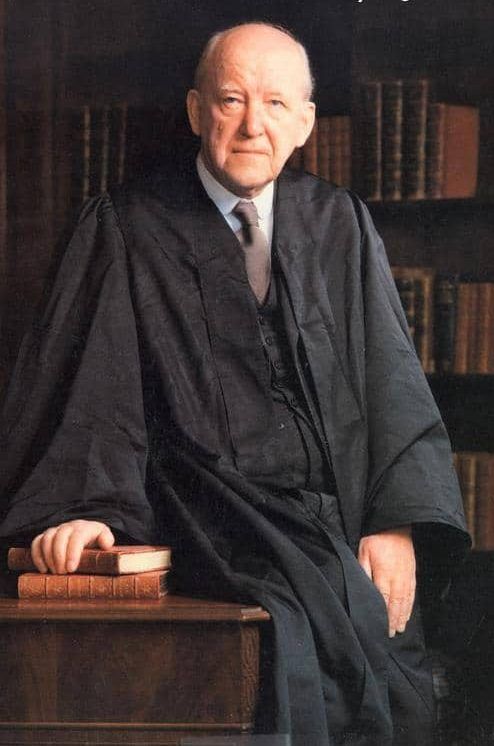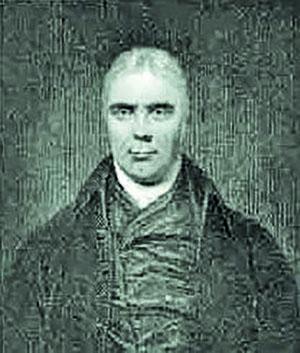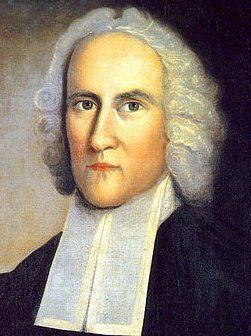
In December 1967, Dr Martyn Lloyd-Jones gave an address to what was then known as the Puritan Conference on the topic of ‘Sandemanianism’. Our initial reaction might be that the topic is esoteric, of little interest or value to modern men and women. But we would not feel this way if we were well-versed in the history of eighteenth-century Evangelicalism, the womb from which this particular doctrinal viewpoint came forth. Dr Lloyd-Jones proceeded to show that this theological aberration is of paramount importance for our own day. This article seeks to explore some aspects of the long-forgotten Sandemanian controversy.
Sandemanianism and the nature of saving faith
The roots of Sandemanianism lie in the 1720s when John Glas (1695-1773), minister of the Church of Scotland work in Tealing, Scotland, and a man of considerable erudition, gradually came to the conviction that Christ’s kingdom is one that is completely spiritual and, as such, independent of both state control and support. A church of some seventy believers was formed in the parish of Tealing, and over the next couple of decades ‘Glasite’ congregations could be found in Dundee, Perth, Edinburgh and booming textile centres such as Paisley and Dunkeld. Although the Glasites were never numerous, Glas’ views exerted wide influence throughout the British Isles and America, especially through the travels and writings of his son-in-law Robert Sandeman (1718-1771), whom Lloyd-Jones rightly describes as ‘a born controversialist’. In addition to adopting such practices as foot-washing, holy kissing, the use of lots to determine God’s will, and an insistence on unanimity in all church decisions, Glas’ and Sandeman’s followers also distinguished themselves from other eighteenth-century Evangelicals by a predominantly intellectualist view of faith. They became known for their cardinal theological tenet that saving faith is ‘bare belief of the bare truth’.
Bare faith
Sandeman, who assumed the leadership of the movement in the 1750s, insisted that faith becomes a work of human merit if it includes anything beyond simple assent to the truth of what God has done through Christ’s death and resurrection. In Sandeman’s reading of New Testament passages like Romans 4:5, justification by faith has everything to do with God instilling into the minds of impenitent men and women, the belief that God gave his dear Son for sinners. Essentially, it has nothing to do with the exercise of the will in repentance or the engagement of the heart’s affections towards God. Sandeman also turns to 1 John 5:1 to argue that regeneration accompanies intellectual assent to the central truth of the Christian faith, namely, that Jesus of Nazareth is the Christ and that he died and rose again for sinners. Thus, Sandeman can talk of ‘bare faith’ and ‘bare persuasion of the truth’.

In a genuine desire to exalt the utter freeness of God’s salvation, Sandeman sought to remove any vestige of human reasoning, willing or desiring in the matter of saving faith. He was convinced that if the actions of the will or the affections are included in saving faith, then the Reformation assertion of ‘faith alone’ is compromised. Thus, in the Sandemanian system, saving faith is reduced to intellectual assent to the gospel proclamation about Christ. To be fair to Sandeman, it should be noted that he was quite prepared to admit that affections come into play once a person believes. But at the time of conversion, they play no rôle in saving faith.
It should occasion no surprise that many of those who embraced Sandeman’s intellectualist view of faith became stunted in their Christian lives. For instance, Christmas Evans (1766-1838), an influential Welsh Baptist leader, adopted Sandemanian views for a number of years in the late 1790s, but eventually found himself dwelling in ‘the cold and sterile regions of spiritual frost’, and in the grip of ‘a cold heart towards Christ, and his sacrifice, and the work of his Spirit’.
Sandemanianism, however, did not go not unopposed. A number of key eighteenth-century Evangelical leaders wrote replies and rebuttals of this system, including; William Williams of Pantycelyn (1717-1791), the Welsh Calvinistic Methodist poet and hymn writer; Isaac Backus (1724-1806), the American Baptist champion of religious liberty; and Thomas Scott (1747-1821), the Anglican biblical commentator. It was the Calvinistic Baptist theologian Andrew Fuller (1754-1815), though, who drew up what many regard as the definitive response to Sandeman and his views.
Andrew Fuller of Kettering

Andrew Fuller was born in Wicken, a small agricultural village in Cambridgeshire. His parents, Robert Fuller (1723-1781) and Philippa Gunton (1726-1816), were farmers who rented a succession of dairy farms. In 1761 his parents moved a short distance to Soham, where he and his family began to attend the local Calvinistic Baptist church, and where Fuller was converted in November 1769. After being baptized the following spring, he became a member of the Soham church. In 1774 Fuller was called to the pastorate of this work. He stayed until 1782, when he became the pastor of the Calvinistic Baptist congregation at Kettering.
His time as a pastor in Soham was a decisive period for the shaping of Fuller’s theological perspective. It was during this period that he began a lifelong study of the works of the New England divine Jonathan Edwards (1703-1758) which, along with his humble submission to the authority of the infallible Scriptures and the fearless exercise of his mind, enabled him to become what his close friend John Ryland Jr (1753-1825) once described as ‘perhaps the most judicious and able theological writer that ever belonged to our [the Calvinistic Baptist] denomination’.
Strictures on Sandemanianism
Fuller came into contact with Sandemanianism when he travelled throughout Scotland in the 1790s and 1800s seeking to raise financial support for the Baptist Missionary Society and their mission at Serampore, India. Never one to allow what he considered vital error to go unchecked, Fuller penned a series of letters to a friend on the Sandemanian system, which he eventually published in 1810 as Strictures on Sandemanianism.
Fuller was quite willing to admit that there was much in Sandemanianism that he considers ‘worthy of serious attention’. Sandeman’s critique of the undue subjectivism that reigned in certain quarters of eighteenth century Evangelicalism, for instance, was not without merit. As Fuller notes: ‘If the attention of the awakened sinner, instead of being directed to Christ, be turned inward, and his mind be employed in searching for evidences of his conversion, the effect must, to say the least, be uncomfortable, and may be fatal; as it may lead him to make a righteousness of his religious feelings, instead of looking out of himself to the Saviour.’ Fuller shared Sandeman’s concern that some professing believers of their day were more taken with their experiences of Christ than with Christ himself. For them, faith is all but reduced to religious feeling.
Yet, he goes on to argue, the solution to such an unbalanced focus on the subjective elements of Christianity is not to be found by rejecting them out of hand: ‘Subjective religion is as necessary in its place as objective.’ While faith can never be identified simply with feeling, nor can it be ever divorced from the affections of the heart. Genuine faith ‘does not pertain to the understanding only’, Fuller stresses. In elaborating this position, Fuller makes a number of telling points against the Sandemanian system.
First, if faith does concern only the mind, then there would be no way to distinguish genuine Christianity from nominal Christianity. A nominal Christian mentally assents to the truths of Christianity, but those truths do not grip the heart and re-orient his or her affections. The so-called faith of a nominal Christian, Fuller points out, is really little different from that of the fallen angels, whom we are told in James 2:19 ‘believe’ in the existence of one God and ‘tremble’.
More than knowledge
Second, the opposite of saving faith in Scripture, Fuller notes, is not ‘simple ignorance’, which it would be if the Sandemanian view of faith were correct. Its opposite is an ignorance which has its roots in a deep-seated hatred of the true God. Christ can therefore state that unbelief rejects him because, in the words of John 3:19, ‘darkness is loved rather than light’. When Ephesians 4:18 talks about the understanding of unbelievers being darkened ‘because of the ignorance that is in them, because of the blindness of their heart’, surely, Fuller reasons, the ignorance in view here is much more than mere lack of knowledge. Does it not entail, he asks, a deep-seated aversion to God and holy things? But if unbelief comprises much more than ignorance, then faith must entail more than knowledge. If unbelief involves an aversion to the truth and a forthright rejection of the gospel, then faith in it must include a love and receptive approbation of the truth.
Third, knowledge of Christ and the things of God is a distinct type of knowledge. Knowing Christ, for instance, involves far more than knowing certain things about him, such as the fact of his virgin birth or the details of his crucifixion. It involves a desire for fellowship with him, a delight in his presence, and a recognition that among all the beings of this universe he truly is the most beautiful.

Two kinds of knowledge
To substantiate this point, Fuller reproduces a lengthy passage from Jonathan Edwards’ Treatise Concerning Religious Affections, which was first published in 1746. For Fuller, as we have noted, Edwards was his major theological tutor after the Word of God. ‘No man’, he once said of Edwards, ‘possessed a clearer insight into these difficult subjects’, namely, the various rôles played by the understanding, the will and the affections in the matter of conversion and the Christian life.
The passage that Fuller cites is from Part III, Section 4 of the Religious Affections, in which Edwards is detailing the fourth of twelve ways or signs in which genuine Christian spirituality reveals itself. Edwards is arguing that biblical Christianity has at its core a spiritual way of knowing or understanding which encompasses both the will’s inclinations and the heart’s affections. In Edwards’ words: ‘spiritual understanding…consists in a sense of the heart, of the supreme beauty and sweetness of the holiness or moral perfection of divine things, together with all that discerning and knowledge of things of religion, that depends upon, and flows from such a sense’. Edwards then contrasts this understanding, that the Spirit imparts to all true believers, with that which is purely intellectual.
‘That sort of knowledge’, Edwards writes, ‘by which a man has a sensible perception of amiableness and loathsomeness, or of sweetness and nauseousness, is not just the same sort of knowledge with that, by which he knows what a triangle is, and what a square is. The one is mere speculative knowledge; the other sensible knowledge, in which more than the mere intellect is concerned; the heart is the proper subject of it, or the soul as a being that not only beholds, but has inclination, and is pleased or displeased. And yet there is the nature of instruction in it; as he that has perceived the sweet taste of honey, knows much more about it, than he who has only looked upon and felt of it.’

Merely intellectual knowledge, which the Sandemanians maintained was the essence of saving faith, feels no attraction or aversion to the object known. Knowledge of geometrical shapes, for example, is unaccompanied by either a relish for them or a hatred of them. Genuine knowledge of God in true Christian experience, though, is inseparable from a delight in him and a relish of his person. Such knowledge differs as much from a merely speculative knowledge as the taste of honey differs from the simple understanding that honey is sweet. The essence of true Christianity lies in genuine spiritual affections in which mind and heart, affections and understanding, are as intimately united as heat and light in a fire.
Lessons for today
What can we conclude from this brief survey of Sandemanianism and Andrew Fuller’s rebuttal of it? Well, this controversy contains a couple of important lessons for contemporary western Evangelicalism, both of them linked to this issue of spiritual affections.
First, it lays bare one of the reasons for the spiritual aridity of far too many Evangelical causes. Prevalent in many Evangelical circles is a notion of conversion and faith that is all too similar to Sandemanianism, in that it excludes emotion and the exercise of the affections. Men and women have been counselled that coming to Christ is as simple as reciting a prayer or raising their hand at an evangelistic crusade; that if they say they believe in certain propositions about Jesus, then they must be saved. They are told that faith can run independently of their affections and inclinations. They are thus given a false sense of assurance and the consequence is that our churches have within their walls numbers of men and women who base the authenticity of their Christian lives on a one-time decision.

How different is genuine conversion! Yes, the intellect is involved as it yields to the truth of the gospel. But the affections are also vitally involved as the person takes delight in the person of Christ and his love for sinners so perfectly displayed on the cross.
Barrenness
There is a second lesson that the Sandemanian controversy teaches with regard to the affections of the heart, and that is their vital importance in the ongoing life of the church. The barrenness of much of Evangelical church life and worship has not gone unnoticed over the past two decades. In seeking to remedy the situation, some have swung to the opposite extreme and for them the Christian life has become a restless search for extraordinary experiences and spiritual ‘highs’. In response to these ‘restless experientialists’, others have entrenched themselves more deeply in a merely intellectual approach to Christianity and scorn experience. The solution? The interwoven balance of heart and head, understanding and affection, proposed by Fuller and Edwards. Fuller does not quote the following passage from Edwards as far as I know, but it perfectly sums up the way both of these men recognized that full-orbed Christianity engages both the understanding and the affections in a passionate delight in God.
‘God glorifies himself towards the creatures in two ways: one, by appearing to their understanding, and two, by communicating himself to their hearts and in their rejoicing and delighting in and enjoying the manifestations which he makes of himself. God is glorified not only by his glories being seen, but by its being rejoiced in. When those that see it delight in it, God is more glorified than if they only see it, his glory is then received by the whole soul, both by the understanding and by the heart.’







